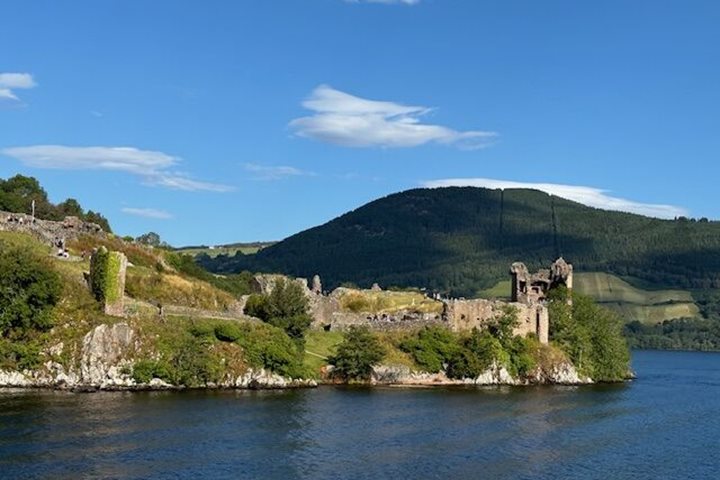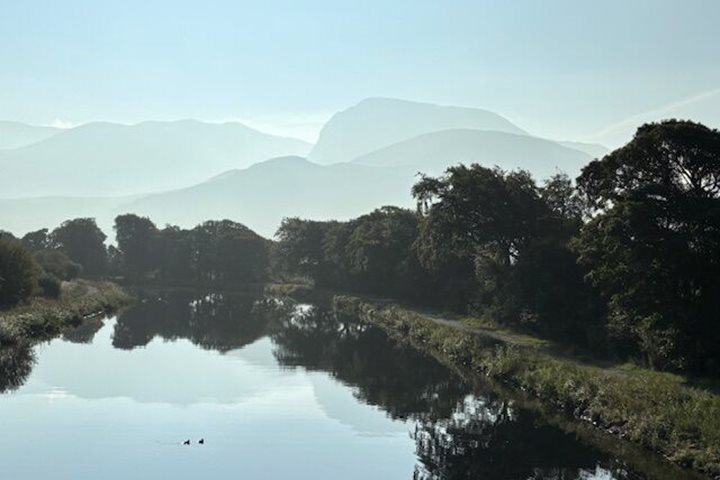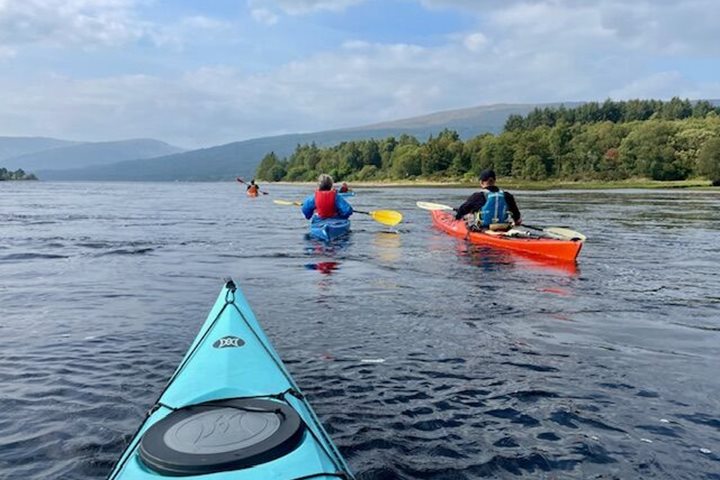Once again we outwitted the weather forecasters and enjoyed blue skies and bright sunshine, without a drop of the expected rain. Passage through the next set of locks brought us into the calm blue waters of Loch Ness, the deepest of all the Scottish lochs. “Nessie” remained elusive, but we enjoyed stories of the various hoaxes and tales of sightings of the monster that have circulated over the centuries as we passed by the romantic ruins of Urquhart Castle. Once the site of a Pictish fortress, by the 14th century it had become a formidable medieval castle. Ideally situated on a promontory on the northwest shore of Loch Ness, it was captured (briefly) by the English King Edward I, and was the site of frequent raids, changing hands many times.
As the loch narrowed towards its eastern end we passed through the final set of locks and moored up for lunch at Muirtown Top. The weather still held for our trip through Inverness to the site of the Battle of Culloden, held on April 16th 1746. This conflict finally put an end to the hopes of the Jacobites whose aim was to restore the throne of England to the Stewart dynasty. This defeat changed forever the character of the Highlands.
We then wound the clock back to 2000 BC and made our way to Clava Cairns and walked upon a Bronze Age landscape. These monuments are examples of a type of burial unique to the Inverness area and bear witness to the skills of prehistoric builders, and the communities who once dwelt here. Aligned to the winter solstice, these extraordinary monuments offer us a rare glimpse into their social system and beliefs.
Still the sun shone as we drove back to Inverness for our final night on Lord of the Glens, where we enjoyed the Captain’s dinner and a chance to share photographs collected on this memorable voyage.







